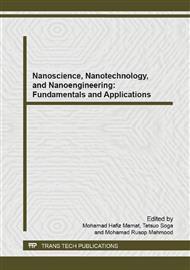p.210
p.214
p.219
p.223
p.227
p.232
p.238
p.243
p.248
Mask Design Consideration for Low Aspect Ratio Wet Etch Micromachining on Silicon Substrate Planar Power Transformer
Abstract:
Commercial planar power transformer core majorly inserted manually as stand-alone components sandwiched on the stacked multilayer PCB of the power supply system. The indispensible gap within the layers still seems to produce significant losses due to leakage inductance meanwhile the low thermal conductivity of the PCB worsen the generated heat dispersion process. Thus this paper is to explore a new approach in order to attain a higher efficiency, high thermal conductivity dispersion and low cost mass production on this magnetic device using CMOS development procedure on a silicon wafer substrate. Considerations for the optimum mask design process for power transformer based pattern micromachining on the Silicon substrate process using low cost wet etching process are presented and discussed. The process are to manipule the anisotropy properties using concave and convex mask pattern to produce a correct final angle and pattern using recognized KOH solutions optimized ratio. The conventional wet etching concept has been explored with a several mask design template and comparison between several pattern size in order to attain the best fine structure and correct angle pattern up to 100 um depth. Several convex corner corners compensation methods has been reviewed which finally concluded to method proposed by Wei Fan and Dacheng Zhang has been verified within the 40% KOH:IPA in 50°C solutions experiment.
Info:
Periodical:
Pages:
227-231
Citation:
Online since:
June 2015
Authors:
Price:
Сopyright:
© 2015 Trans Tech Publications Ltd. All Rights Reserved
Share:
Citation:


